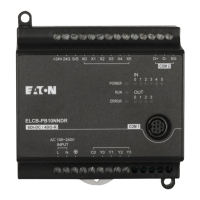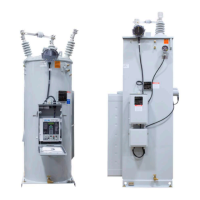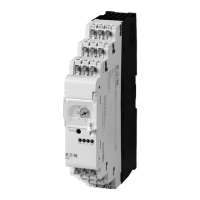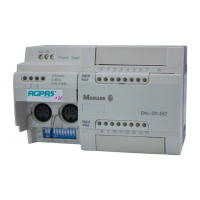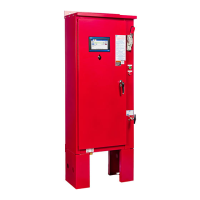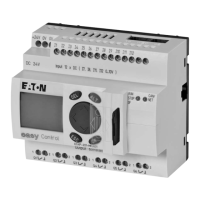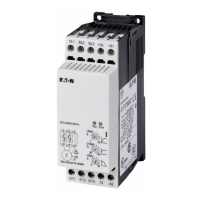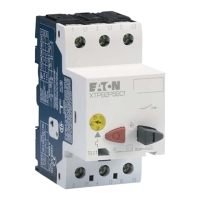2. Programming Concepts
MN05003003E For more information visit: www.eaton.com
2-17
2.7 ELC Bits, Nibbles, Bytes, Words, etc
ELC controllers utilize five numeric types to perform different instructions. The following is the
explanation of numeric types.
Numeric Description
Bit
Bit is the basic unit of a binary number system. Range is 0 or 1
Nibble
4 consecutive bits, such as b3~b0.
Range 0 – 9 (BCD) or 0~F hexadecimal.
Byte
8 consecutive bits b7~b0
Range 0 – 255 or 00 - FF hexadecimal
Word
16 consecutive bits (2 consecutive bytes) b15~b0
Range -32,768 ~ 32,767 or 0000 ~ FFFF hexadecimal
Double Word
32 consecutive bits (2 consecutive words) b31~b0
Range -2,147,483,648 ~ 2,147,483,647 or 00000000 - FFFFFFFF
hexadecimal
The relationship among bit, nibble, byte, word, and double word are shown as below.
NB0NB1NB2NB3NB4NB5NB6NB7
BY3 BY2 BY1 BY0
W1
DW
W0
Double Word
Word
Byte
Nibble
Bit
2.8 Binary, Octal, Decimal, BCD, Hex
ELC is capable of using many different numbering systems.
1. Binary Number, (BIN)
ELC internally calculates, operates, and stores the value in Binary format.
2. Octal Number, (OCT)
The external I/O points of the ELC are numbered in octal format.
e.g.
External inputs: X0~X7, X10~X17, …, X377. (No. of input)
External outputs: Y0~Y7, Y10~Y17, …, Y377. (No. of output)
3. Decimal Number, (DEC)
ELC applies decimal operation in situations below:
z Set value for timers and counters, e.g. TMR C0 K50. (K value)
z No. of S, M, T, C, D, E, F, P, I, e.g. M10, T30. (No. of device)
z For use of operand in API instructions, e.g. MOV K123 D0. (K value)
z Constant K:

